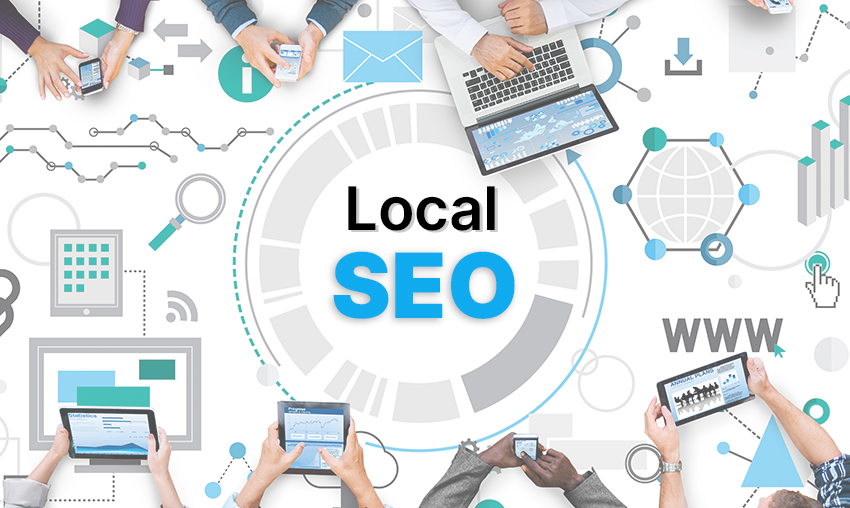Customized strategies from a renowned marketing agency for small business
Customized strategies from a renowned marketing agency for small business
Blog Article
Exactly How Efficient Web Design Can Enhance Your SEO Strategy and Improve User Experience
The intersection of efficient web style and search engine optimization is a critical area for any company seeking to improve its on the internet visibility. An instinctive layout not only raises customer experience but also considerably influences SEO performance by lowering bounce rates and improving engagement metrics.
Relevance of Web Style for Search Engine Optimization
Efficient internet style is frequently ignored in its effect on search engine optimization (SEARCH ENGINE OPTIMIZATION) These factors add to decrease bounce rates and greater customer interaction, which are important metrics for SEO success. seo agency.
Additionally, web layout elements such as tidy code, maximized photos, and correct use of HTML tags significantly affect a website's crawlability. Look engines depend on structured data to understand internet site web content and context, making it vital for internet designers to apply ideal methods. Furthermore, the combination of SEO techniques within the style stage, such as including keywords in titles, meta summaries, and alt message for pictures, can boost exposure in search results page.
Inevitably, prioritizing reliable web layout not just ensures a seamless user experience however likewise develops a strong foundation for search engine optimization efforts, resulting in increased organic traffic and boosted positions. Hence, organizations should acknowledge the inherent link between internet style and SEO to attain online success.
Trick Layout Elements for Customer Experience
Customer experience (UX) functions as a foundation for successful internet style, affecting just how site visitors engage with a website and regard its value. To optimize UX, several vital style components should be focused on.
First of all, user-friendly navigation is crucial; a well-structured menu and clear paths permit users to find info swiftly, decreasing aggravation. Aesthetic hierarchy plays a crucial duty, assisting individuals' attention to vital components through size, shade, and positioning. This helps with quicker decision-making and enhances overall interaction.
Additionally, a constant design style improves familiarity and count on, as customers really feel a lot more comfortable navigating a website that aesthetically aligns throughout its web pages. Efficient use white space additionally can not be overlooked; it protects against clutter, allowing important material to stick out and making the site more absorbable.
Additionally, high-grade photos and graphics are important, as they not just capture interest yet additionally share expertise. Lastly, rapid load times are non-negotiable; delays can lead to greater bounce prices and decreased customer satisfaction. By concentrating on these key design elements, organizations can dramatically improve their customer experience, promoting favorable communications that urge return sees and conversions.
Mobile Responsiveness and SEO Influence
As website design significantly prioritizes customer experience, the value of mobile responsiveness can not be overemphasized. With a considerable part of internet traffic originating from mobile phones, a responsive layout makes certain that websites are accessible and useful across numerous display dimensions. This adaptability not only improves individual contentment however also plays a vital duty in search engine optimization (SEO)

Including mobile responsiveness into website design also promotes improved packing times, which is an essential variable in both individual experience and search engine optimization rankings. Slow-loading web pages deter users, causing greater abandonment rates and negatively affecting search exposure. Inevitably, focusing on mobile responsiveness not just enhances customer involvement however likewise enhances an internet site's SEO technique, producing a more competitive on the internet existence.
Website Structure and Navigation Best Practices
An efficient site structure and intuitive navigating are essential parts of successful web recommended you read style. They not only improve customer experience but likewise play a vital function in search engine optimization (SEO) A clear power structure enables individuals and online search engine to recognize the connections in between different pages, boosting the general use of the website.
Usage keyword-rich and descriptive URLs, as they offer context and improve search presence. This his comment is here decreases bounce prices and maintains individuals involved.

Determining the Success of Website Design
Determining the success of internet layout includes reviewing various metrics that show user involvement and overall website efficiency. Secret efficiency indications (KPIs) such as bounce price, typical session period, and web pages per session offer insight into exactly how customers connect with the website. A high bounce price may show that customers are not finding the web content appealing or relevant, motivating a need for design or content modifications.
Furthermore, conversion prices are important for examining the performance of internet design. A boost in conversions, whether via kind submissions, product purchases, or e-newsletter sign-ups, frequently correlates with intuitive layout and user-centered performances. Tools like Google Analytics can supply in-depth reports on these metrics, allowing developers to recognize patterns and areas for enhancement.
Customer responses is one more crucial element. Using surveys and functionality screening can introduce qualitative understandings into user experiences, assisting style modifications that cultivate contentment. Inevitably, a combination of measurable data and qualitative responses establishes a detailed image of web design success, making certain that it lines up with both search engine optimization goals and individual assumptions. By regularly determining these factors, organizations can improve their website design techniques to enhance customer experience and drive meaningful engagement.
Conclusion

As web layout progressively focuses on individual experience, the importance of mobile responsiveness can not be overemphasized.Incorporating mobile responsiveness right into web layout also cultivates improved filling times, which is an essential factor in both individual experience and Search engine optimization positions. Eventually, a mix of quantitative information and qualitative feedback develops an extensive image of web style success, guaranteeing that it straightens with both Search engine optimization purposes and individual assumptions. By regularly measuring these aspects, businesses can fine-tune their web style approaches to optimize customer experience and drive significant involvement.
In conclusion, efficient internet design substantially boosts SEO methods and user experience.
Report this page